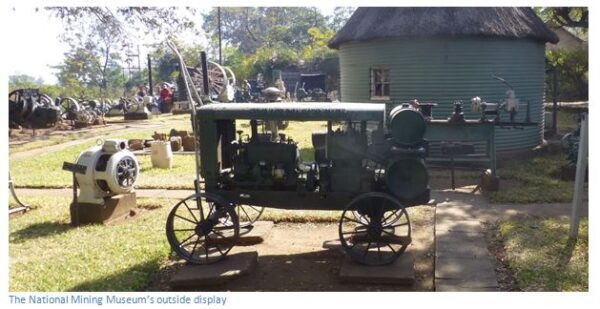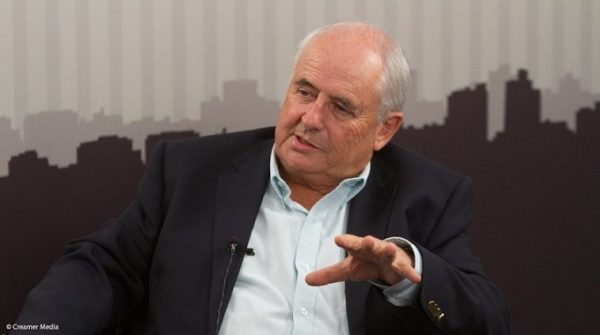Geology and National Mining Museum, Uncovering loss, emergence and continuity

As opposed to the Natural History Museum in Bulawayo, The National Mining Museum seem not to be a rich repository of Zimbabwe’s mining heritage. The National Mining Museum is located at Globe and Phoenix mine which happened to be the second largest gold producer in the country and was estimated to have produced 104.880.96 kilograms with a grade of 27.6 grams/ton. The mine takes names from 2 original ore bodies that were geologically explored namely Globe Reef Quartz vein enclosed in granite and Phoenix a complex network of quartz.[1]
The National Mining Museum is equipped with an amazing unique relic which is a paper house. It was constructed in 1894 out of green paper and iron, imported from Britain and shipped to Kwekwe. It happened to be home for Piper who was Globe and Phoenix Mine’s first Director. The house also sheltered the famous Cecil John Rhodes, the imperialist whose ambition was to occupy Africa from Cape to Cairo. The Mining Museum exhibits mining tools and equipment dating from pre-colonial times to the modern period.[2] On display is mining equipment of the post-1900 era which includes stamp mills, belt-driven models powered by steam and later by electricity, pumps, compressors, crushers and rock drills. The Museum includes replicas of iron smelting furnaces, slabs of rock with dolly holes together with hammer stones. The curios displayed at the museum indeed represent the complexity of the exhumation of mineral resources from underground. The displays provide a profound insight into the technological advancement of mining machinery from the precolonial era to post 1900s era. However, modern-day machinery used in the fourth industrial revolution is to no avail for exhibition in the museum. The museum relics ought to demonstrate to the public the transition from traditional methods of mining to smart technologies applied in the fourth industrial revolution. Precolonial mining equipment on exhibition was donated by Rio Tinto Zimbabwe.[3]However modern-day equipment such as LHDs, drill rigs and rock bolters are unavailable for exhibition. The problem lies in the limited sponsorship of modern-day geological specimens and mining equipment to showcase to the public. Mining companies and societies ought to donate more curios for exhibition to the mining museum to make it more lucrative.
Due to illegal gold mining activities within Globe and Phoenix mine, mining relics are said to be not in a safer space. Some of the relics were prone to theft due to inadequate physical security and storage space. According to Mahachi, two crucible furnaces were stolen in October 2000 and five more crucibles were stolen on 24 December 2001.[4]Given such scenarios, the preservation of mining heritage becomes a matter of controversy. Mahachi further asserts that The National Mining Museum is evidenced by short of sound documentation.[5]Contrary to that, much documentation on geology is reposited at the Geological Survey of Zimbabwe which happens to be the archival pedestal for the mining sector. Documents on geological explorations were archived at the Geological Survey of Zimbabwe which gives it credit for sound documentation and storage of mining documentation. Hence restricting the National Mining Museum to display mining relics and geological specimens.
Disciplines such as geology, anthropology and archaeology played a critical role in the establishment of museums in Africa. Trained professionals in these disciplines had the sole task of building up the first museum collections during the colonial era.[6]Mining fraternities such as the Geological Society and Chamber of Mines play crucial roles in the continuous development of the National Mining Museum given their capacity in terms of funds and knowledge to preserve mining heritage and continuity.
The establishment of museums in the colonial era was intrinsically linked with clubs and societies of predominantly white colonial folks. The interests of these learned societies and club members were to understand the mineral wealth of the country with its flora and fauna.[7]There seems to be a discontinuity in auxiliary support from mining fraternities to revitalize the National Mining Museum for it to gain significance to the public.
The National Mining Museum lies in the same league with the Zimbabwe Natural History Museum in Bulawayo. The museum was established to create knowledge about natural resources particularly the mineral wealth in the colony. The Zimbabwe Natural History Museum was the first museum to be established in Rhodesia in 1902. This was a result of a special request from the Chamber of Mines. The museum was established to house ever ever-increasing collection of mineral specimens collected by prospectors around the country during that time. The first curator of the Natural History Museum being F.P.Mennel who was a geologist by profession. Given the special reference to the relationship between geology and the creation of museums dating back to the colonial era, one can deduce that geological societies and mining clubs owe vast contributions to the National Mining Museum of Zimbabwe.
Museums were developed in Zimbabwe with a specific interest in economic geology. Collections of minerals and rocks or geological specimens which were housed in museums allowed colonizers to appreciate mineral resources discovered in Zimbabwe.[8]Another silent discipline that contributes to the creation and development of museums is that of prospectors. They contribute through the repositioning of discovered geological specimens in the museum. However, the above-mentioned discipline’s point of convergence is on the exploration and extraction of mineral resources. Most disciplines limit themselves to contribution to knowledge to the public and the future generation. A discontinuity in curation once rooted in mining fraternities barricades the continual development and lucrativeness of the mining museum.
The paper goes further to unleash the units responsible for operating the National Mining Museum. The National Mining Museum is operated by the National Museums and Monuments of Zimbabwe. According to Chiwaura, Museums can be classified based on a criterion, like who runs them, what do they collect and what do they preserve among others.[9]The classification of the National Mining Museum is based on a collection of geological specimens and specialized mining tools and equipment. Therefore, the mining museum can be managed by the National Museums and Monuments of Zimbabwe and sponsored by mining fraternities to promote continuity, and restoration of neglected histories, past and present.
Mining fraternities such Chamber of Mines, the Association of Mine Managers of Zimbabwe AMMZ) and Geological Society need to sustain the mining museum to preserve mining heritage and contribute to knowledge for future generations. It is of great essentiality for Mining Companies to compel to donating displays and financial input for the growth and development of the National Mining Museum. Mining policies are subjected to review, upon recommendation that mining companies ought to contribute to the growth and development of The National Mining Museum.
[1]B.Cairncross,‘Kermisite: Globe and Phoenix mine Kwekwe District,” Rock and Minerals, Volume 95, Issue 5,2020
[2] M.Mawere etal, African Museums in the Making: Reflections on the Policies of material and Public Culture in Zimbabwe, Langaan Research and Publishing, Bamenda,2015, p.9
[3] Ibid,
[4] F.Chaterera, Beyond Regress, Museums Records management in Zimbabwe, Journal of South African Society of Archivists, Volume 47,2014,p.
[5] ibid
[6] M.Mawere etal, African Museums in the Making: Reflections on the Policies of material and Public Culture in Zimbabwe , Langaan Research and Publishing, Bamenda,2015,p.5
[7] Ibid,p.8
[8] Ibid,p.9
[9] Ibid



